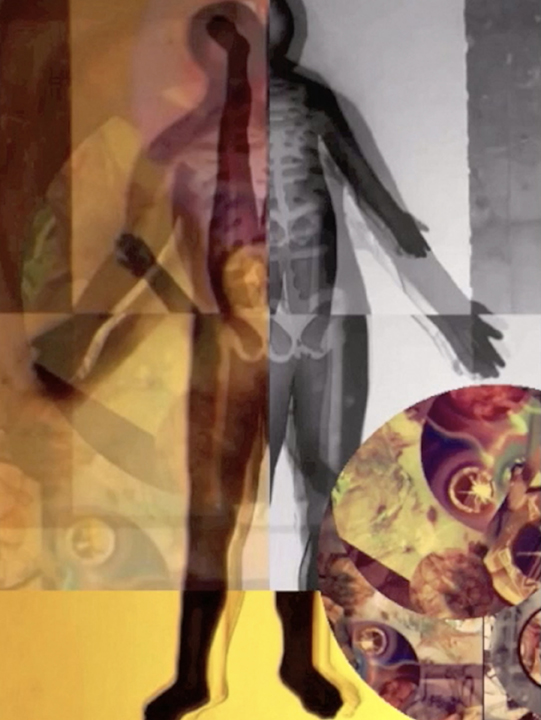Jase Clark

Jase Clark, still from Parasitic Structures, 2015, video, 7:34.
Jase Clark’s Parasitic Structures impressionistically blends a dissection chart, Clark’s drawings and prints and paintings, and snippets of landscapes and patterns through stop motion animation and 3-D modeling video programs. The resulting jumble celebrates the host–parasite relationship as a check on the human race, and leavens dry science via color, movement, and accumulation. Biologists intuit that parasites far outnumber nonparasites, concluding that resistant hosts play a fundamental role in modifying ecosystems. Clark’s video jostles and quivers with insect-like vivacity, identifying the viewer with the opportunist, prodding us to aestheticize squeamishness.
Current biological theory asserts that the ancestor of mitochondria, the powerhouse in cell structure, was a free-living bacterium taken into a single-cell organism and slowly transformed from an energy-thieving protein into an energy-making one. Clark himself continues to adapt, organizing chaos within fragmenting and overlapping target patterns, circles, and a tilted square or two, picturing the life cycle as glittery, sparkly, massive coruscation.
Part of Passing Bittersweet, a 2020 exhibition at the Williams Center Gallery. Find more of Jase Clark’s work on his website.